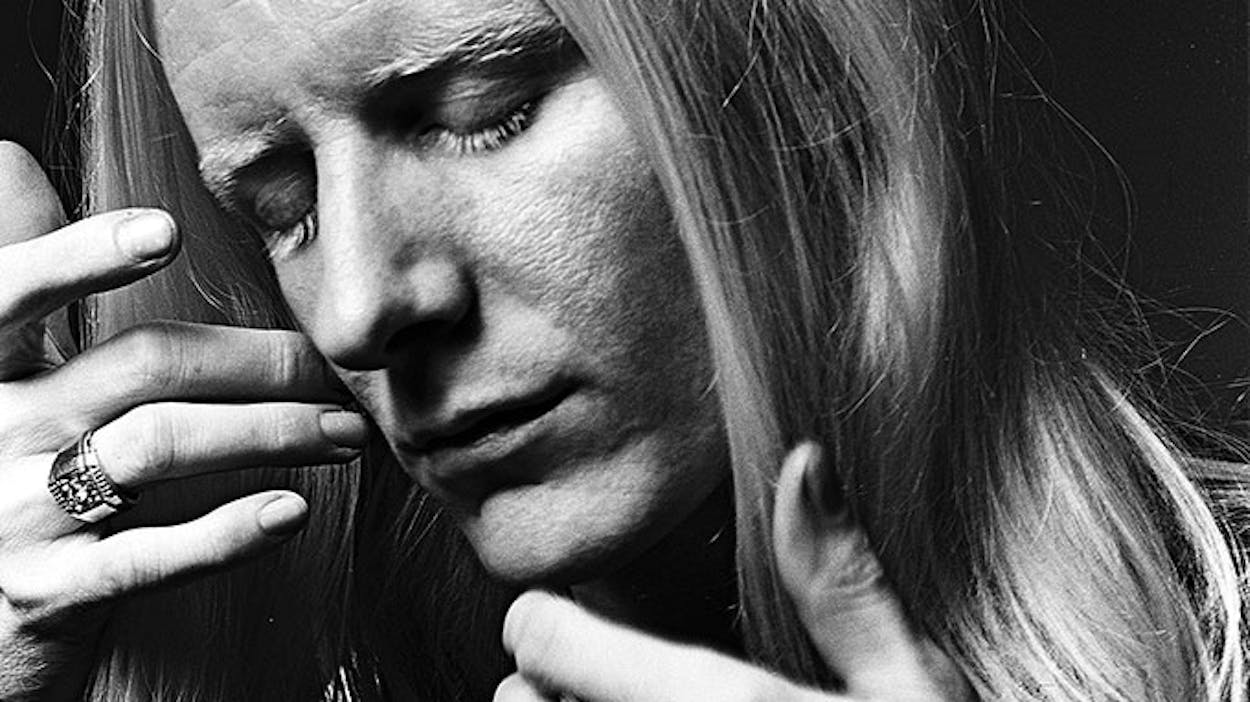In late 1972 ZZ Top’s Billy Gibbons and Dusty Hill were summoned to Johnny Winter’s Houston apartment. The Beaumont-raised Winter—whom Rolling Stone famously put on the map in 1968 by describing him as “a cross-eyed albino with long, fleecy hair, who plays some of the gutsiest, fluid blues guitar you’ve ever heard”—was an arena-filling draw four records into his career. ZZ Top, on the other hand, were still largely beardless and just getting started.
“He told us, ‘I just wanted to meet the guys that made ‘Just Got Paid,’ ” says Gibbons, referring to the soon-to-be-classic song from the trio’s sophomore record, Rio Grande Mud. “Then it got interesting. He said, ‘It’s a good song, but you seem to want to sound like me.’ Ha! And it was true. We did.”
Winter, who died July 16 at the age of seventy, influenced plenty of musicians. Aerosmith’s Joe Perry has said, “If it weren’t for Johnny Winter, I would have never picked up the guitar.” Gibbons first began studying Winter’s technique in 1966 at the ACT III, the legendary but short-lived Houston nightclub co-owned by Kenny Rogers. “He cut an unforgettable image—an albino in the window right on South Main with a black suit and white guitar,” Gibbons remembers. “He was unusual-looking, for sure. But he also played like nobody else. He was dexterous and soulful. He penetrated with diamond-like explicitness, taking you right to the place you wanted to be. Every time.”
More often than not, the place Winter took us to was the heart of the blues. In February, when Sony/Legacy put out a four-CD box set of Winter’s solo material, the label gave it the title True to the Blues: The Johnny Winter Story. And though Winter found some of his biggest commercial success in the early seventies by teaming up with guitarist Rick Derringer to transition into rock—“Rock and Roll, Hoochie Koo” was their best-known song—he always contended that he was still essentially playing the blues, just faster and louder than people were accustomed to. By 1977 Winter had landed the gig he often told audiences he had been dreaming about since he was a child: collaborating with Muddy Waters. Three of the four albums he produced for the electric blues pioneer won Grammys for Best Ethnic or Traditional Folk Recording. “Some of those recordings stand as the pinnacle of modern blues,” Gibbons says. “They’re treasures.”
Gibbons never got to perform onstage with Winter (though there was a near-miss on a 2012 Rock Legends Cruise), but the two men recently collaborated on a cover of the Jimmy Reed classic “Where Can You Be” for Step Back, Winter’s final album, due out September 2. It’s one of those albums of duets that artists at a certain late stage in their career (Frank Sinatra, Ray Charles, Jerry Lee Lewis) seem obliged to put out. Step Back features appearances from an all-star cast—Joe Perry, Dr. John, Ben Harper, and Eric Clapton also show up—and as is often the case with these things, Gibbons’s participation wasn’t particularly intimate; he phoned in his guitar part from England, where he was on tour.
Still, he was happy to do it. Winter, after all, had once been pretty kind to Gibbons. On that day back in 1972, after the mercurial star teased Gibbons and Hill about copping his style, he lightened up. “We listened to blues records all afternoon,” Gibbons says. “Then we had Mexican food delivered. It was unforgettable.”
- More About:
- Music
- Obituaries







